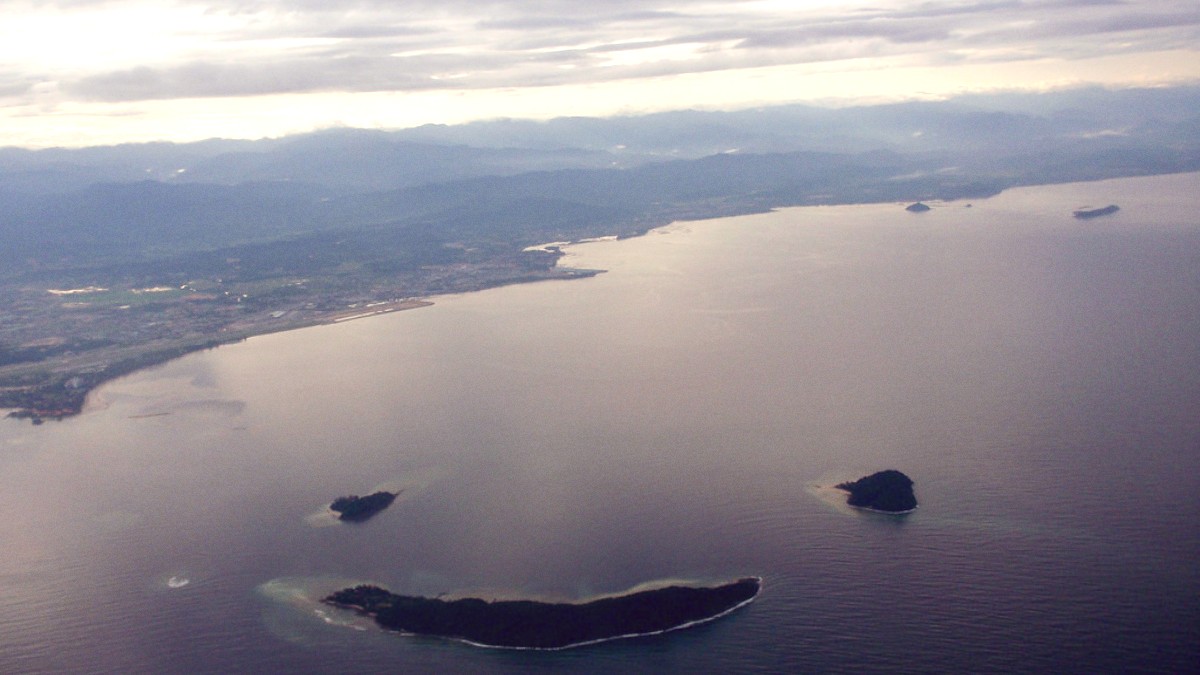
Malaysian Borneo Sabah, Malaysia
Seafood (prawns, crabs, fish, squid, clams) is readily available and prepared in countless ways. Herbs and spices like lemongrass, ginger, turmeric, chili, lime, and belacan form the backbone of local dishes.
Rice and noodles are fundamental to Malaysian meals. Tropical fruits like durian, rambutan, mangosteen, and jackfruit are abundant at local markets.
Often light, like nasi lemak or roti canai, available from early morning in kopitiams and hawker centers.
Typically from 12 PM - 2 PM.
Usually starts from 6 PM onwards, with seafood restaurants and night markets remaining open late.
Kota Kinabalu is famous for its fresh seafood. Choose your fresh seafood from tanks or displays and have it cooked to order (steamed fish, grilled prawns, butter prawns, chili crab).
Find at: Welcome Seafood Restaurant, Salut Seafood Restaurant, Gayang Seafood Restaurant, Pasar Malam seafood stalls.
Malaysia's national dish. Coconut milk-infused rice served with sambal (chili paste), fried anchovies, peanuts, cucumber slices, and a hard-boiled egg. Often with fried chicken or beef rendang.
Find at: Widely available at most local eateries, especially for breakfast.
A flaky, pan-fried flatbread, typically with various curries for dipping (dal, fish, chicken curry). A popular breakfast item, often prepared fresh on a griddle.
Find at: Mamak stalls (Indian Muslim eateries).
"Pulled tea." A frothy, sweet, milky tea, a national drink. Watch vendors "pull" the tea for a show.
A local favorite with Gula Melaka (palm sugar syrup) at the bottom, evaporated milk, and black tea, making distinct layers.
Mainly found within luxury hotels and resorts (e.g., Shangri-La Tanjung Aru, The Magellan Sutera Resort).
Numerous options throughout the city center and shopping malls. They present a mix of local, Chinese, Indian, Western, and Japanese cuisines.
A must-visit for street food. Stalls present grilled seafood, satay, local snacks, and fresh juices. It becomes lively in the evening.
Features a wet market section for fresh produce, meat, and seafood. Also contains an area for cooked food stalls.
Offers a glimpse into local daily life.
Contains a section with local snacks, dried seafood, and ready-to-eat items.
Explore the back alleys for unique local interactions.
Discover authentic dishes.
Variety of sushi, ramen, and more.
Enjoy pasta and pizza.
Familiar tastes.
As a Muslim-majority state, halal food is widely available and simple to find.
Many restaurants are halal-certified or Muslim-owned. Look for "Halal" signs.
Kosher food is generally not available, and specialized Kosher restaurants are non-existent.
Travelers with kosher needs should plan to bring their own food or adhere to vegetarian/vegan options with caution.
Informing staff about severe allergies (e.g., nuts, shellfish) is important, but cross-contamination presents a risk in busy kitchens.
Utilize apps like HappyCow for vegetarian and vegan restaurants. These can guide you to suitable dining spots.
Learn to prepare traditional Malay or Sabah dishes. These often include a market visit to learn about local ingredients.
Some agricultural tourism sites, like the Sabah Tea Garden, offer tours and tastings. This presents insight into local produce.
Occasional food festivals or night markets are organized, especially during public holidays or special events.
Hands-on preparation of local dishes.
Engage with local culinary traditions.
Visits to local markets to learn about ingredients.
Discover fresh produce and local vendors.
Enjoy the city's famed fresh seafood prepared in countless ways at popular restaurants.
Try specialty noodle soups like Laksa and Tuaran Mee, unique to Sabah's culinary landscape.
Experience Ambuyat, a traditional sago palm dish, for an authentic taste of local heritage.
Enhance your culinary journey in Kota Kinabalu with these insights: